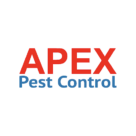How To Get Rid Of Squirrels In The Attic?
Squirrels infesting an attic can be a major nuisance. The activity of these rodents can cause
significant disruption to the home’s inhabitants and damage the structure itself. Professional pest control services are often needed to effectively and safely eliminate squirrels in the attic.
Squirrels are highly adaptable animals that have adapted to living close to humans in urban environments. They are most commonly found nesting in attics, garages, and other sheltered areas within homes.
As they nest, their droppings and urine can build up and create unsanitary conditions for people in the home. Additionally, their gnawing habits can cause structural damage to walls, ceilings, and other parts of the home’s structure.
If you don’t deal with squirrels immediately, it can be a major nuisance. Squirrels can cause a lot of damage to your home and property, including chewing on wood, wires, and electrical fixtures.
They can also contaminate food, spread diseases, and cause major destruction to gardens and landscaping. Additionally, they can be incredibly noisy and disruptive, and they can be a major nuisance to your neighbours. All these reasons are why it’s important to get rid of squirrels as soon as possible.
What Are The Risks Of Attempting To Trap And Remove Squirrels From An Attic?

Squirrel infestations in an attic can be hazardous, as they may cause significant damage to insulation and wiring. Even though trapping and removing squirrels from the attic may seem like a good solution, there are several risks involved with attempting this yourself.
Homeowners must consider that squirrels can carry diseases and parasites, such as fleas or ticks, which can be transferred to humans if proper precautions are not taken. Additionally, when attempting to trap squirrels, it’s important to be aware of the possibility of trapping baby squirrels or leaving them stranded in the attic crawl space.
It’s also crucial that all safety measures are strictly followed when using live traps for rodent control, as there could be potential for serious injury.
Finally, it is recommended that homeowners seek professional assistance for the safe and effective removal of squirrels in the attic. Professional pest control companies have the experience and knowledge necessary for safe and efficient squirrel removal.
How Can I Prevent Squirrels From Entering My Attic?

The prevention of squirrels entering an attic is a proactive measure that can be taken to avoid future problems. The first step is to contact a pest control specialist, who will be able to identify holes and evidence of squirrel nests in the attic. Read more on Squirrel pest control here.
Trimming any trees near the roof line is important, as this will discourage them from attempting to gain access. Installing bright lights around the roof’s perimeter can also act as a deterrent, as squirrels do not like lighted areas.
In addition, it is recommended that all gable vents and fascia boards should be secured with metal flashing or caulk. This will prevent any potential entry points for squirrels into the attic space.
If there are already squirrels in your attic, lights may also need to be installed there. Pest control specialists may advise using certain repellants or cutting down any trees nearby to prevent further infestation.
What Are The Signs Of A Squirrel Infestation In An Attic?

Identifying signs of a squirrel infestation in an attic can be done by inspecting the area for evidence of their activity. Eastern grey squirrels are the most common species of squirrel to cause damage in attics, and they typically enter through roof vents or damaged soffits.
Common signs include gnawing on wood, insulation, wires, tracks and droppings; digging holes in the walls, and scratching noises throughout the day. Squirrels may also create nests inside your attic using insulation or leaves.
Contact a pest management company to install strobe lights and one-way doors to evict any existing squirrels living in your attic.
How Do I Keep The Squirrels From Entering The Attic?

Having a squirrel in your attic can be a huge nuisance, as they can cause extensive damage to the building by chewing on electrical wires and other materials. The most effective way to handle a squirrel infestation is to trap the animal and release it back into its natural habitat.
Once the squirrel is removed from the attic, it’s important to take steps to prevent re-entry. One
of the best ways to do this is to install a mesh screen around any large openings for a squirrel to gain access to.
In addition to physical barriers, several chemical solutions can be used to deter squirrels from
entering an attic:
- Traps: Traps are one of the most effective methods for removing squirrels in an attic. Various types of traps are available, including:
- Live-catch traps
- Glue boards
- Snap traps
- Electronic repellents.These should be placed near areas where squirrel activity has been observed and regularly checked for animals that have been trapped.
- Repellents: Commercial squirrel repellents contain ingredients designed to encourage the animals to leave an area without harming them. These typically come in granular or liquid form and should be applied directly at entry points or around potential nesting sites in your attic.
- Attractants: Although this may seem counterintuitive, using attractants such as bird seed or nuts can help keep squirrels out of your attic by providing them with food elsewhere in your yard or garden. This will discourage them from entering your house in search of food sources.
No matter what method you choose for deterring squirrels from entering your attic, you must take steps immediately after noticing signs of their presence to prevent long-term damage, and potential health risks associated with their nests or droppings.
Regularly inspecting your home’s exterior for any possible entry points can also help reduce unwanted encounters with these pests in the future.
How Often Should I Check My Attic For Squirrel Activity?

If you’re wondering how often you should check your attic for squirrel activity, the answer is, it depends on a few factors. If you’ve recently noticed any signs of squirrel activity in or around your home, then you should check your attic as soon as possible.
This could include things like noises coming from the attic, chew marks on the exterior of your home, or droppings around the foundation.
If you haven’t noticed any signs of squirrel activity, then you can check your attic less often. Every 3-4 months should suffice. During your inspection, look for things like chew marks on beams or wires, signs of nesting materials, or droppings.
If you notice any of these things, you should take action to prevent squirrels from entering your attic.
Ultimately, it’s important to check your attic regularly if you live in an area with a lot of squirrels. Doing so can help you detect and prevent any squirrel activity before it becomes a problem.
What Are The Most Common Entry Points For Squirrels In An Attic?

It’s important to identify entry points for squirrels infesting an attic. Squirrels can access the attic through small openings, like a hole in the roof, or even through vents and soffit gaps. They can also chew their way into an attic through wood or siding, electrical wires, and other items.
To prevent squirrels from entering an attic, homeowners can install gutter guards that cover all possible entry points. Additionally, pest control companies offer mosquito control, termite control, and wildlife exclusion services to help prevent squirrels from entering an attic.
If an infestation has already occurred, homeowners should contact a pest control specialist specialising in wildlife exclusion solutions. These specialists can assess the situation and recommend how to repel squirrels from the attic.
How Can I Tell If A Squirrel Is Living In My Attic?

When there is a suspicion that squirrels are living in the attic, it’s important to take the necessary steps to confirm or deny their presence. Identifying signs of squirrels living in the attic can be done by checking different things.
First, check if there is visual evidence such as tracks and droppings. You should also listen for sounds such as running, chewing, scratching, and nest building. Additionally, take note if there are broken tree branches from nearby trees or chewed wood around possible entry points in the attic.
Lastly, check for the possibility of squirrels getting food from different food sources. This means you need to observe if bird feeders are being emptied quickly. If bird seeds are scattered around the property, and if peanut butter is smeared around entry points.
Suppose any of these signs are present on a property. In that case, it is recommended to contact pest control specialists to assess and provide a removal plan for safely evicting any squirrels living in the attic space.
Additionally, cameras can help identify where they are accessing the home and aid in formulating a successful removal plan.
Once removed by professionals, repairs should be made to secure any entry points and prevent future invasions by rodents or other wildlife animals.
It’s also beneficial to contact local moving companies for assistance with cleaning out any debris left behind by squirrels and gardening experts for advice on preventing future infestations by trimming tree branches away from homes and gardens.
What Type Of Damage Can Squirrels Cause In An Attic?

Squirrels can cause great damage in an attic as they are adept at gnawing and chewing. They often chew through electrical wiring, which can lead to fires, and may also tear apart insulation for nesting material or to build dens.
Their droppings and urine can also attract other pests, such as mice and insects. Control companies should be called if the problem is beyond what lawn care services can handle.
Squirrels can also damage structures within the home by using their incisors to chew on window sills, door frames, and other wooden elements. Homeowners may also notice streaks of oil or grease on surfaces, as squirrels use this to mark their territory.
In addition to physical damage, some homeowners may find that squirrels have caused an unpleasant smell in the attic due to their droppings and urine.
Don’t Let Squirrels Take Over Your Home: Hire A Professional Exterminator Today

Knowing the potential risks associated with trapping and removing squirrels from an attic is important. It’s also essential to take preventative measures to understand the signs of a squirrel infestation.
Homeowners should check their attics regularly for signs of activity and use chemical deterrents such as mothballs or ammonia-soaked rags to deter squirrels from entering.
Furthermore, they should identify and seal common entry points into the attic to prevent future infestations. It is important to recognise the type of damage squirrels can cause in an attic and take appropriate action accordingly.
By following these steps, homeowners can effectively eliminate squirrels living in their attic for good.

Tony Johnson, Founder & Lead Technician at Apex Pest Control, is a BPCA and NPTA accredited pest management expert with over 35 years’ hands-on experience. Tony specialises in Integrated Pest Management and ensures all services comply with UK pest legislation, including the Wildlife and Countryside Act 1981 and COSHH Regulations 2002. His commitment to continual learning and adapting to industry best practices means clients receive effective, safe solutions for pests affecting homes and businesses across South Yorkshire. Tony’s dedication to professional standards, ethical treatment methods, and local expertise has made him a trusted partner for pest control and prevention.
-
BPCA & NPTA accredited | CHAS certified
-
Committed to UK pest law compliance & safety
-
Focused on effective, ethical pest management for South Yorkshire


